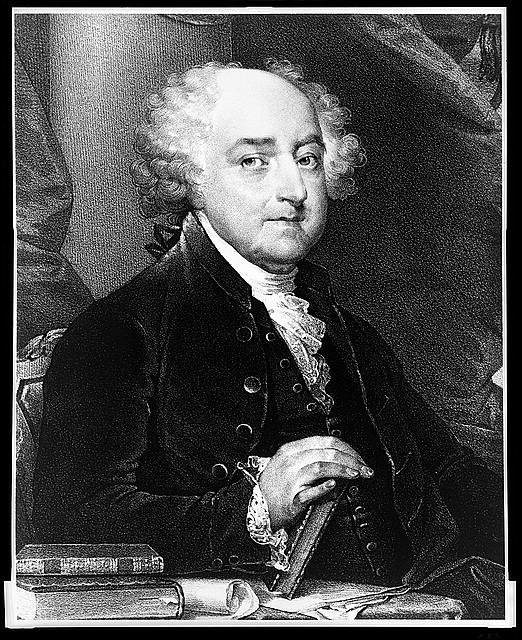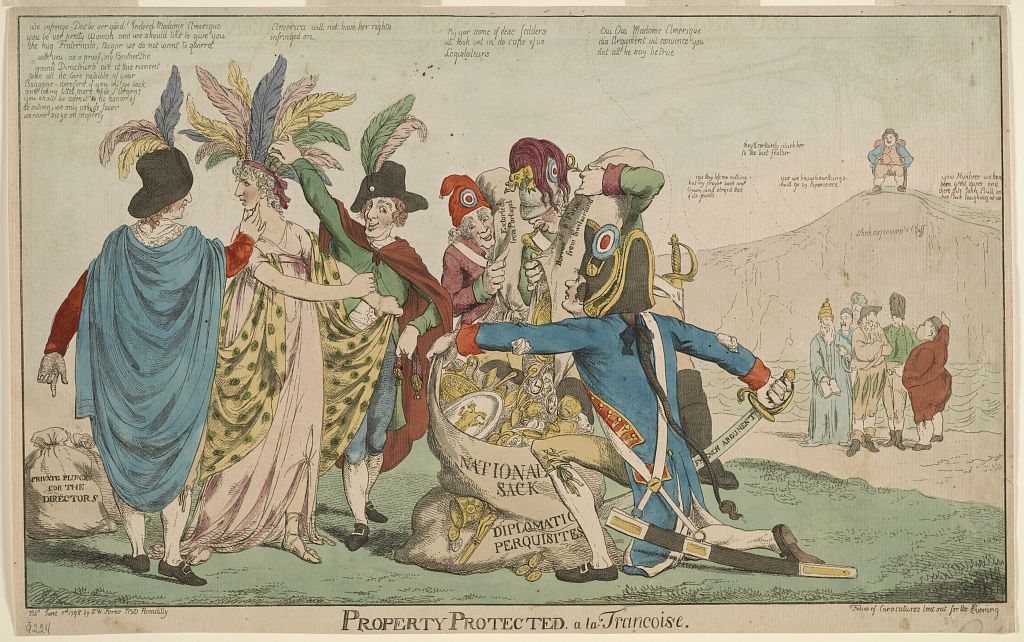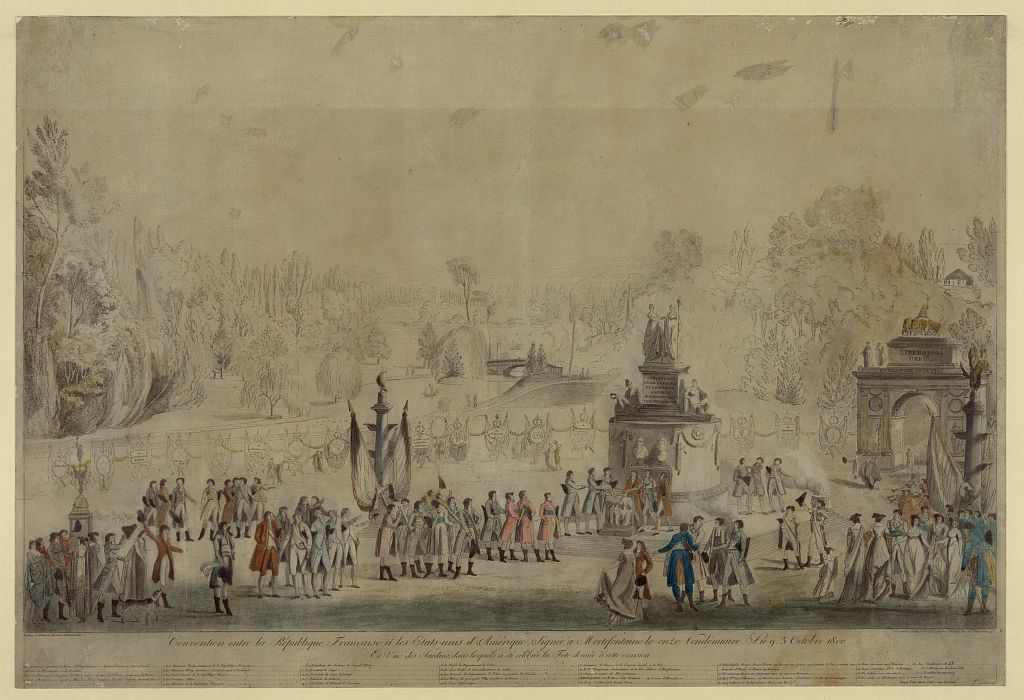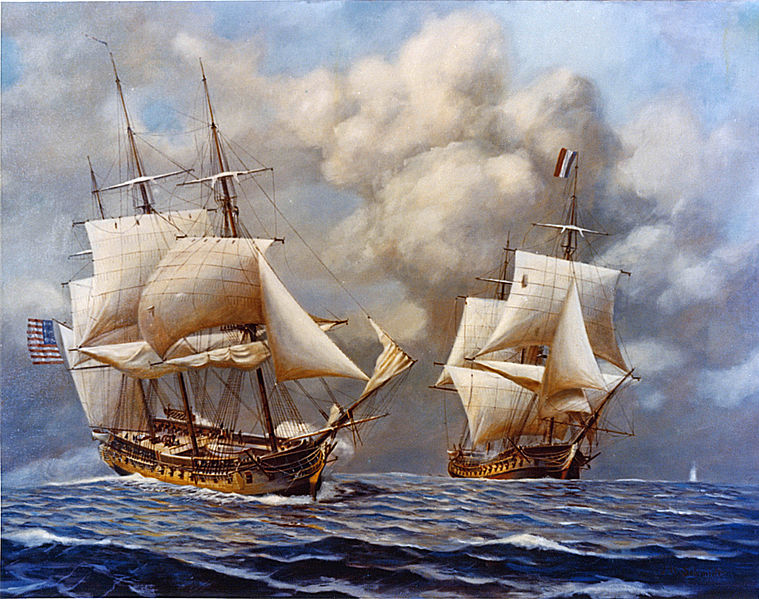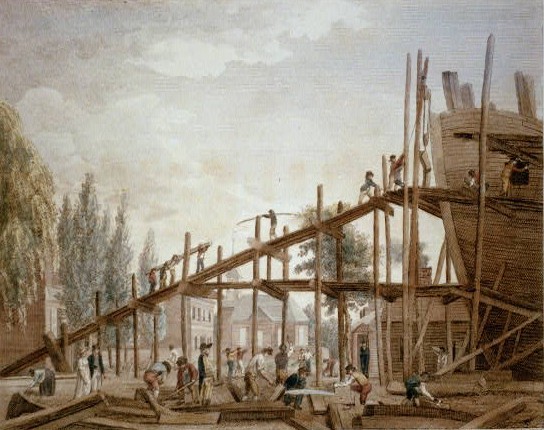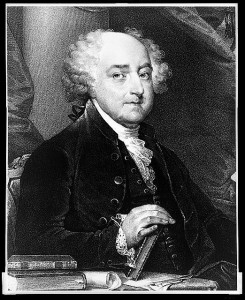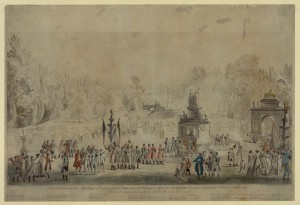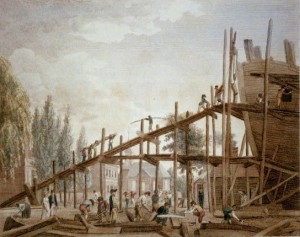Quasi-War
Essay
Philadelphia, as capital of the United States during the 1790s, played a central role in the conflict called the Quasi-War, an undeclared war, between the United States and France during the years 1798 to 1800. Philadelphia became a hotbed of public displays for and against the Federalists’ response to this conflict and served as a base for naval operations against French forces in the West Indies.
After war began between Great Britain and France in 1793, relations between France and the U.S. became tense, particularly when the French Revolutionary government known as the Directory came to power and U.S.-British relations stabilized with the Jay Treaty in 1795. The U.S. attempted neutrality in the war, formalized in the Proclamation of Neutrality (1793) of President George Washington (1732-1799). After the Jay Treaty, which settled outstanding issues between Great Britain and the United States and seemingly abrogated America’s Revolutionary era treaty obligations with France regarding mutual defense, the French Directory authorized seizure of U.S. shipping, which soured relations by March 1797 when President John Adams (1735-1826) took office. The conflict with France was especially serious for Philadelphia, a primary commercial port in the United States, as its merchants and ship-owners were hard hit.
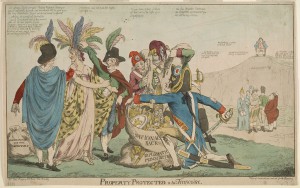
Adams sent a mission to France to seek an agreement that would prevent war, stop confiscation of American shipping, and obtain compensation for seizures of American ships. French agents (named X, Y, and Z in dispatches) relayed the French Directory’s demand, before negotiations could begin, for a bribe, a loan, and an apology for a speech critical of France that Adams had made to Congress. News of the XYZ Affair, as it was later known, created a storm of anti-French feeling in the United States.
Philadelphia experienced a tumult of both anti-French and anti-Federalist sentiment. Protests broke out demanding war with France in a city that was bitterly divided after almost a decade of partisanship over the French Revolution. The Federalists especially used the war with France to stoke fears of the French Revolution spreading to America and of a French invasion to follow. Arguing for increased national security, the Federalist-controlled Congress beefed up the military and passed the Alien and Sedition Acts, which targeted foreign nationals and also made it a criminal offense to criticize the government. Their purpose was to quash Jeffersonian (Democratic-Republican) criticism of Federalist policies and silence the opposition press. The political divide was especially evident in the Philadelphia press, as newspapers sided with the Federalists or Democratic-Republicans. Particularly vociferous was Benjamin Franklin Bache (1769-1798), who was jailed for his anti-administration attacks under the Sedition Act. Federalist judges in the Mid-Atlantic region were especially aggressive in seeking prosecutions under the act, which actions later led to efforts to impeach one Supreme Court justice and to restrict the authority of the judiciary because of their partisanship and supposed abuse of power.
The United States had a relatively small navy at the beginning of the Quasi-War. In 1794, Congress passed the Naval Act, choosing Philadelphian Joshua Humphreys (1751-1838) to design six frigates. Philadelphia shipbuilders constructed several ships, including the USS United States (1797) and the USS Philadelphia (1799), the latter built and outfitted with subscriptions by the citizens of Philadelphia. These ships came under the control of the Navy Department, a special department created by Congress in 1798 as part of the broader program to increase military strength. Privateers also operated out of Philadelphia, preying on French shipping, of which the most famous case was the Louisa. Carrying a letter of marque, Louisa operated as a well-armed privateer in the Atlantic and Mediterranean, where its crew successfully defended against attack by French privateers and took refuge in Gibraltar.
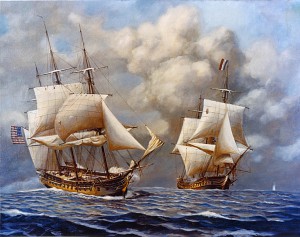
Military operations during the Quasi-War involved encounters between the U.S. Navy and French privateers, first along the Atlantic coast but then mostly in the West Indies. Early in the conflict, the USS Delaware, captained by Philadelphian Stephen Decatur Sr. (1751-1808), captured La Croyable off Egg Harbor, New Jersey. The U.S. Navy commissioned the French privateer, which was attacking merchant ships at the Delaware capes, as the USS Retaliation. It remained in U.S. service until the French recaptured the ship four months later, the only U.S. warship captured during the Quasi-War. In two major naval battles, the USS Constellation engaged two French ships in the Caribbean, capturing l’Insurgente and severely damaging la Vengeance. The USS Enterprise, USS Eagle, and USS Experiment were among the most successful U.S. ships, capturing twenty-five French privateers. Despite these effective U.S. military operations, however, the French seized some 2,000 U.S. vessels during this conflict.
The Quasi-War officially ended with the Convention of 1800, or Treaty of Mortefontaine, which formally ended the alliance of 1778 between the United States and France, but made provisions to reestablish trade and avoid further conflict. Depredations on American shipping continued, however, until the end of the Napoleonic Wars in 1815. The Federalist party also suffered because of the war when it became evident that it had exaggerated fears of French invasion and used the war to threaten the press and repress political opposition. The hotly contested elections of 1800 led to Federalist losses in the state and nation and redrew the political map thereafter in favor of the Democratic-Republicans.
Nathaniel Conley is a doctoral student at the University of Arkansas whose research focuses on the border between Maryland and Pennsylvania with emphasis on the lower class and the border between slavery and freedom. (Author information current at time of publication.)
Copyright 2015, Rutgers University
